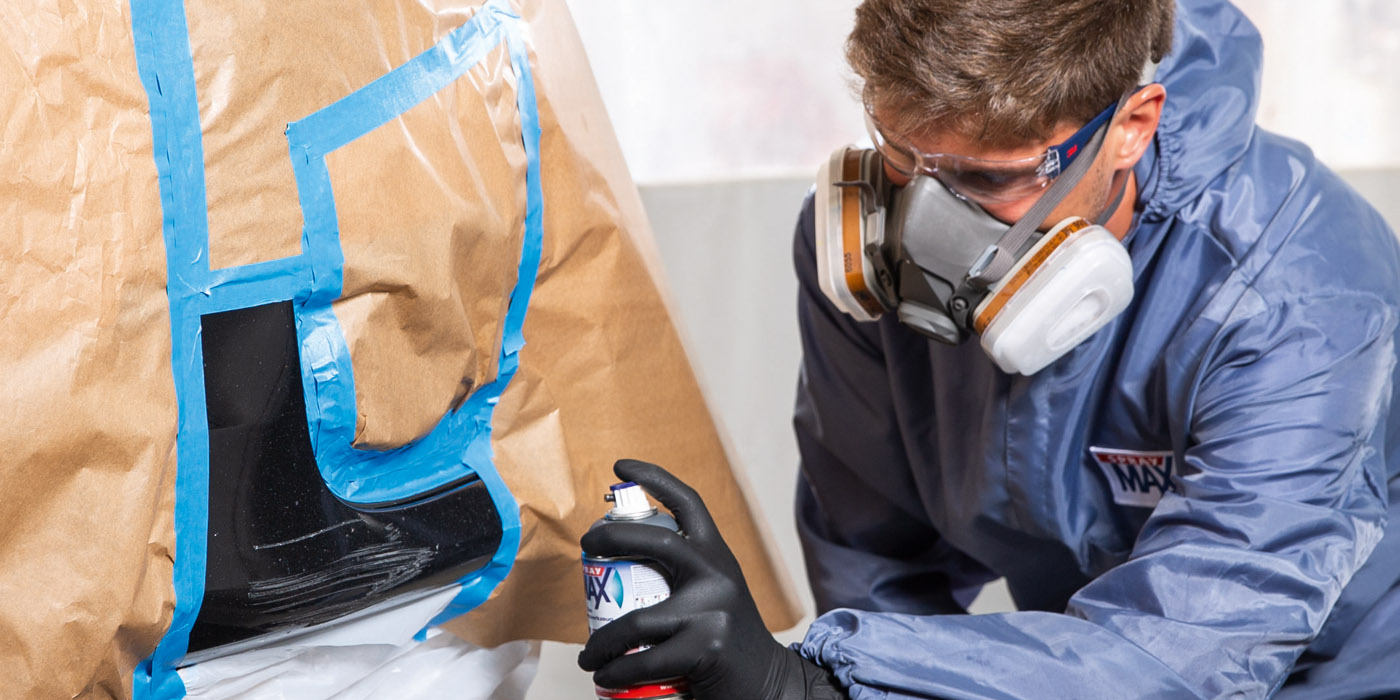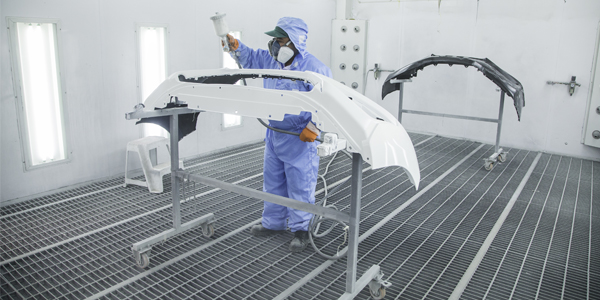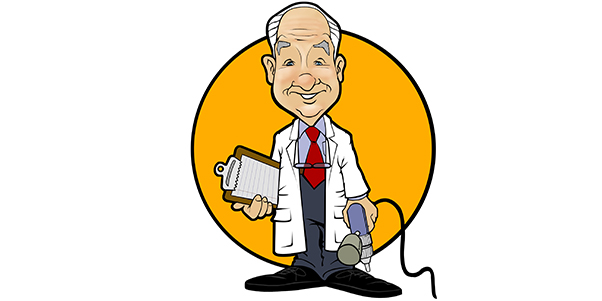 Unlike the exotic palm reader folks who profess to know your life span and more like the crystal ball scammers who fog the issues with smoke and mirrors, the future of coatings in automotive refinish is beyond my ability to predict with accuracy. But never one to pass up a challenge, here’s what I think you could be painting in the future.
Unlike the exotic palm reader folks who profess to know your life span and more like the crystal ball scammers who fog the issues with smoke and mirrors, the future of coatings in automotive refinish is beyond my ability to predict with accuracy. But never one to pass up a challenge, here’s what I think you could be painting in the future.
Rule 1151
Some changes seem obvious. The spread of the Rule 1151 amendments from the heavily occluded air of Southern California into the Ozone Transport Commission (OTC) states (Maine, New Hampshire, Massachusetts, Rhode Island, Connecticut, New Jersey, Delaware, Maryland, Vermont, New York, Pennsylvania, Virginia, Washington D.C.) and the states in the Lake Michigan Air Directors Consortium (LADCO) (Illinois, Indiana, Michigan, Wisconsin, Ohio) appears fairly certain. Out of these OTC and LADCO states, only Delaware and Maryland have currently legislated the volatile organic compound (VOC) limits of our finishes. All the other 16 states continue to discuss the issue, and ultimate passage seems likely to me. Which of your elected representatives will come out in favor of more air pollution?
Because water contains no VOCs, waterborne basecoats, clearcoats and undercoats are a desirable solution to cleaning up our atmosphere. If all the states named above actually pass legislation limiting the VOCs in refinish basecoats to fewer than 3.5 pounds of VOC per gallon of paint and 2.1 pounds per gallon of clear, about one half the population of the U.S. will be regulated. One possible future prediction is that, at that point, the paint companies might take it upon themselves to reduce the volume of non-compliant finishes they offer.
Compliance with the 3.5-pound limit is currently possible by using “exempt” solvents. These five solvents do not cause the formation of ground level ozone (smog), according to the environmental chemists. The solvents are: acetone, ethyl acetate, tertiary butyl acetate (TBAc), isopropanol and P-chlorobenzotriflouride (BCBTF). A peek into the crystal ball suggests that basecoat systems comprised of these solvents and not water will proliferate as well.
With the environmental concerns addressed, what other changes will likely appear on future finishes in your shop? It looks to me like they’ll fall into two general categories: enhanced performance and enhanced visual appeal.
Performance
My prediction for the future, from my 42-year PBE career vantage point, is that production speed will always be a driving force in this business. As long as the insurance companies pay for repairs based on a labor-time database, the ability to perform the work faster than the allotted times will be the secret to shop profitability.
Incredibly fast cure times are available with UV-catalyzed resins, and I predict we will see more of that technology in the paint shop. Since water evaporates at one speed, unlike solvent blends that can accommodate changes in weather and booth conditions, moving more air past waterborne finishes will increase production. All automotive refinish products, both water and solvent, respond favorably to heat. Higher temperatures from the air replacement furnace or infrared heat lamps will drive out solvents and crosslink resins quickly. These external heat devices will enable the use of higher solids coatings. Fewer, thicker coats of primer, sealer, color and clear will enhance performance and application speeds of any future finish technology.
Other performance enhancements on the horizon might include highly adhesive additives that will enable the paint to stick to ever more exotic plastics. Looking at the advancements in the tensile strength of steel, we keep making the gauge lighter, the weight less and the rigidity higher by adding numerous alloys including boron to the raw steel. Even more weight savings and increased CAFE (Corporate Average Fuel Economy) are possible with new plastics. More flexibility in the panels will require coatings that will stay stuck to these slippery new compounds. There are already coatings that require no mechanical agitation, just a quick shake of the container to put the tints into full solution.
Visual Appeal
Visual appeal is what sells cars. From the very first sparkle in paint (1930s premium autos like Cadillac and Packard had the dregs from aluminum roof coatings added to provide the first use of reflective flake,) to the latest color-changing coated mica chip on the cars in the showroom today, striking-looking paint appeals to the consumer.
From past interviews with knowledgeable folks in our industry, I predict that future auto finishes will have even more dramatic color-changing reflectants. Things like colored aluminum flake, ground glass, highly chromatic pigments and head-turning color changes in sunlight will all make Mrs. Smith say, “Yes, I’ll take it.” The other side of more reflectance is much less reflectance, and the use of matte clears seems to be coming up fast. I parked next to a factory-painted flat green motorcycle recently and watched as a crowd admired the no-gloss effect.
How exotic will it get? How about a finish that carries an electrical current and will change color based on the driver’s whim and a switch on the dash? How about a finish that uses technology similar to the transitional lenses in eyeglasses? How about an inexpensive “wrap” similar to those on commercial delivery vehicles that shrinks to the body panels and would enable the owner to completely change the color on the car for a few hundred dollars?
My crystal ball is fogging up. I asked the following paint companies to predict what they thought the future of auto refinishes looked like. Here’s what they said:
Dhruv V. Parekh
Product Manager, Automotive & Aerospace Coatings NA
AkzoNobel
We anticipate that environmental regulations will continue to push the industry toward lower VOC requirements. With this push, waterborne finishes, in particular basecoats, will continue to grow as the preferred choice for collision repair centers. The industry will see an increased acceptance of wrapped films; however, the spray-applied liquid products will remain the preferred choice from both a technology and aesthetic appeal for body colors.
Other factors such as the increased use of plastics and non-steel type body materials will require coatings on these newer substrates to have more functional and adhesive properties. And, in the area of sustainability, products with air dry capabilities will move away from the more traditional approaches, thus increasing productivity and, at the same time, reducing the carbon footprint.
Vitor Margaronis
Marketing Director, Coatings Solutions, North America
BASF
New technologies in paint materials will drive further specialization of the industry. Low-VOC will continue to be the focus as a result of new legislation. Services will become standard value-added components to complement the range of paint products offered to customers. In the future, paint and associated services will become even more critical to reducing cycle times, increasing throughput and improving the overall efficiency and performance of collision shops.
Pete Mahoney
National Training Instructor
Chemspec USA
With all the rules today, it’s apparent that you’ll either need to be using a waterbase system or a low-VOC solvent system. Though we have a very good waterbase system, I feel that the low-VOC solvent system will be the mainstay in the near future. When a shop goes with the exempt solvent rather than waterbase, there’s far less expense involved in the changeover, which will prevent many of the smaller shops from going out of business due to the cost of upgrading their facility to accommodate the use of waterbase.
Ken Papich
Director of Sales
Matrix System
From nitrocellulose lacquer paints and using lead to fill dents, to low-VOC coatings and computerized laser measuring, the future demand for low-VOC coatings will continue to grow, stemming from regulations and collision repairers’ campaign to go green. Waterborne has seen some great advancement in the past decade; however, Matrix System has seen the demand for low-VOC solvent basecoats increase. We see this trend growing as a viable alternative to waterborne. More change in our industry will include consolidation at many levels. Mergers and acquisitions of DRP facilities continue to promote the MSOs and, at the distribution level, jobber stores are consolidating. Soon, paint manufacturers will be doing the same.
John Parran
Director, Marketing
PPG Automotive Refinish U.S. & Canada
In PPG’s OEM business, use of UV-cured and self-healing clearcoat technology is destined for the not-so-distant future, and waterborne primers and clears will be commonplace on original finishes by 2015. Mirroring these OEM trends, PPG expects it won’t be long before a system that’s totally waterborne, including ‘unders’ and ‘overs’, becomes the predominant refinish system in North America.
In color, our refinish mandate is to keep pace with the OEM trend for introducing more sophisticated colors, incorporating higher chromatic finishes and effects that produce high sparkle from a variety of flakes. The use of matte finishes will also grow.
Tom Gardner
Director of Business Development
Pro-Spray
Pro-Spray R&D teams in the U.S. and UK focus on global solutions that simultaneously improve the process while protecting resources. Short and medium term, this means utilizing more low-VOC, waterborne and cycle time reduction technologies at every stage of the repair, not just color. Long term, coatings will become more green and sustainable. Smart coatings, such as ‘self-healing’ coatings, self-stratifying coatings (technologies that combine two or more processes into one application) and IR coatings (products that can alter surface temperatures) are already being researched. As coatings become more advanced, so will the accompanying technology and communications tools.
Craig Williams
Marketing Director, Global Vehicle Refinish
Sherwin-Williams Automotive Finishes
At Sherwin-Williams Automotive Finishes, the future of automotive paint is only months away and will take shape in four areas:
Packaging – This is one of the most obvious changes our customers will notice. We’re focused on delivering products in packaging that is incredibly convenient to mix and apply.
Compliance – Our customers in all geographies will have a number of great choices for compliant refinish materials.
Speed – Our future products and processes will allow incredible productivity that allows our customers to meet demand for faster cycle times.
Color – The color tools of the future will further speed the process of identifying refinish formulas for an outstanding match to OEM finishes.
Kurt Lammon
President
Urethane Supply
Let’s take a look first at what we know is not going to change — consumers who spend an average 65 percent of their annual income on a family car are still going to want their car to look good, with shiny paint and tight panel gaps. As the OEMs increase the amount of plastic to achieve ever-higher CAFE standards, the refinish of plastic panels will only become more commonplace. The paint manufacturers will meet this challenge while conforming to ever-lower VOC limits by innovating with waterborne and exempt-solvent based liquid coatings that provide adhesion to low surface energy plastics.
Mark Clark is a well-known speaker and consultant. He is proud to celebrate his 24th year as a contributing editor to BSB.













